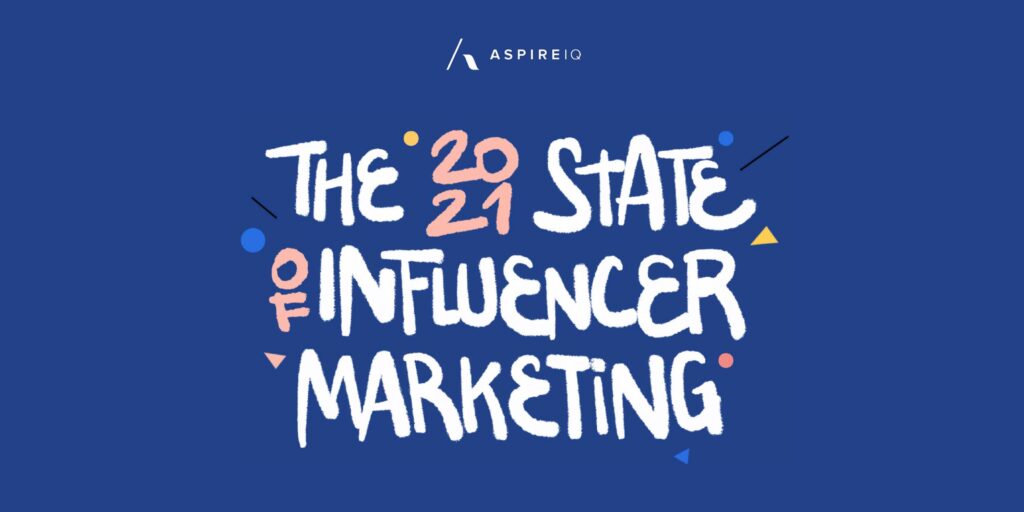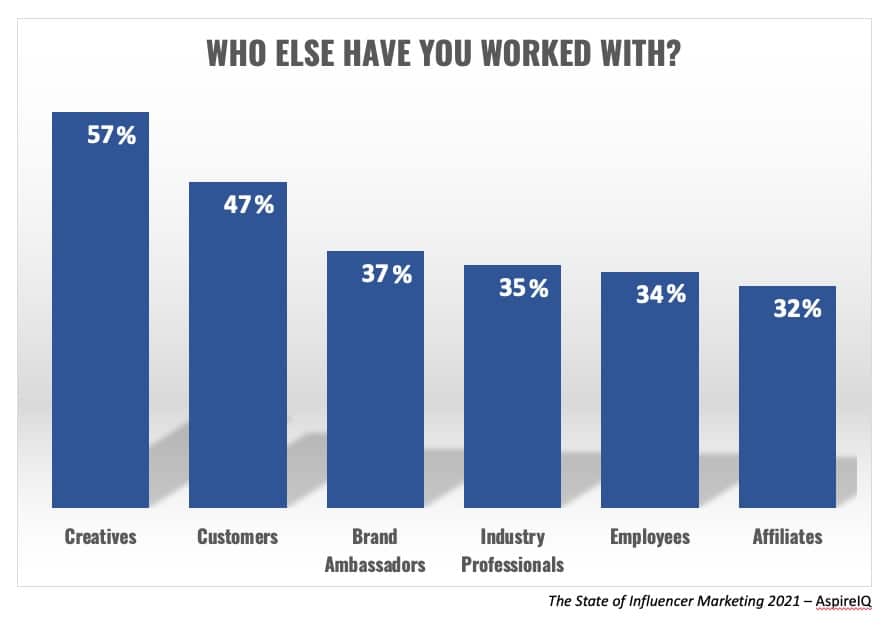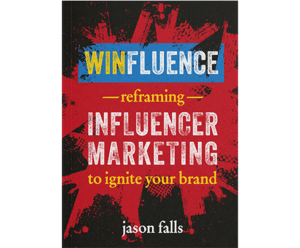Influencer marketing is growing up. If you don’t believe me, look at the latest numbers in AspireIQ’s The State of Influencer Marketing 2021 report.

- 96 percent of creators want to work with brands beyond social media posts
- 87 percent are willing to work with favorite brands in exchange for product, as long as the perceived value is high
- 76 percent of marketers plan to increase their influencer budgets in 2021
Why does that say the market is maturing? Because it’s not just the brands that are evolving. It’s the creators, too. When almost all the creators (read: influencers) want to do more than the product placement selfie, you know they’re thinking about what works and what doesn’t. You know they see more value in a deeper relationship and collaboration. You know they realize the way to keep a brand coming back is to give them better performance and higher value on your side. That begets higher value return from them.
Certainly, there were plenty of influencers saying this was their preference in 2020 and 2019. But as brands have been lamenting the lack of effectiveness of some types of collaborations, the desire has shifted. Less look-at-me and more let’s-dig-in-and-see. That the creators have noticed and almost all are speaking the same language, speaks volumes for where the industry is headed.
AspireIQ’s report is worth a read. It’s always good to see where the various stakeholders in the industry are heading, philosophically. The report surveyed almost 200 marketers and over 100 creators to produce the data. While you always hope to see bigger sample sizes, that’s a fair number.
The question that jumped out to me beyond the points of maturation was validation for AspireIQ’s recent shift to dividing influencers and creators into different categories than we’re used to. Magda Houalla, AspireIQ’s director of marketing, explained the company’s new definitions of influencers in a recent episode of Winfluence. The report asked marketers who they worked with besides traditional social media influencers in the last year. More than half (57%) said creatives while almost half (47%) said customers. Brand ambassadors, industry professionals, employees, and affiliates made the list as well, illustrating influence, rather than influencers, come in different shapes and sizes.

The more granular definitions of influencer types is another indication the industry is maturing. A social influencer may be what we’re used to seeing. But a fantastic designer or artist can provide equal value without hundreds of thousands of followers. Customers and employees have influence, too. Theirs is often over people closer in concentric circles to the brand that you’d think. Industry analysts are the linchpin of B2B influence marketing and Instagram follower count for them is irrelevant.
The report goes a bit deeper editorially, calling out that 2020 was a year of evolution by revolution. It reports 64% of brands talked about real-world events than in the past. While that isn’t limited to political and social issues like the election, #metoo or Black Lives Matter, those hot-buttons surely sparked much of that shift. Slightly more than half of creators (52%) said it’s important for brands to speak and act on real-world events. I would have thought that number was higher.
Download the full report at AspireIQ. When you see an insight that sparks your interest, share it in the comments.

Pre-order Winfluence now!
Reserve your copy by ordering on Amazon, Barnes & Noble or direct from Entrepreneur Press and look for the book to be shipped when it publishes February 23! Learn why we’ve been backed into a corner to think influencer marketing means Instagram and YouTube and how reframing it to be “influence” marketing makes us smarter marketers.

